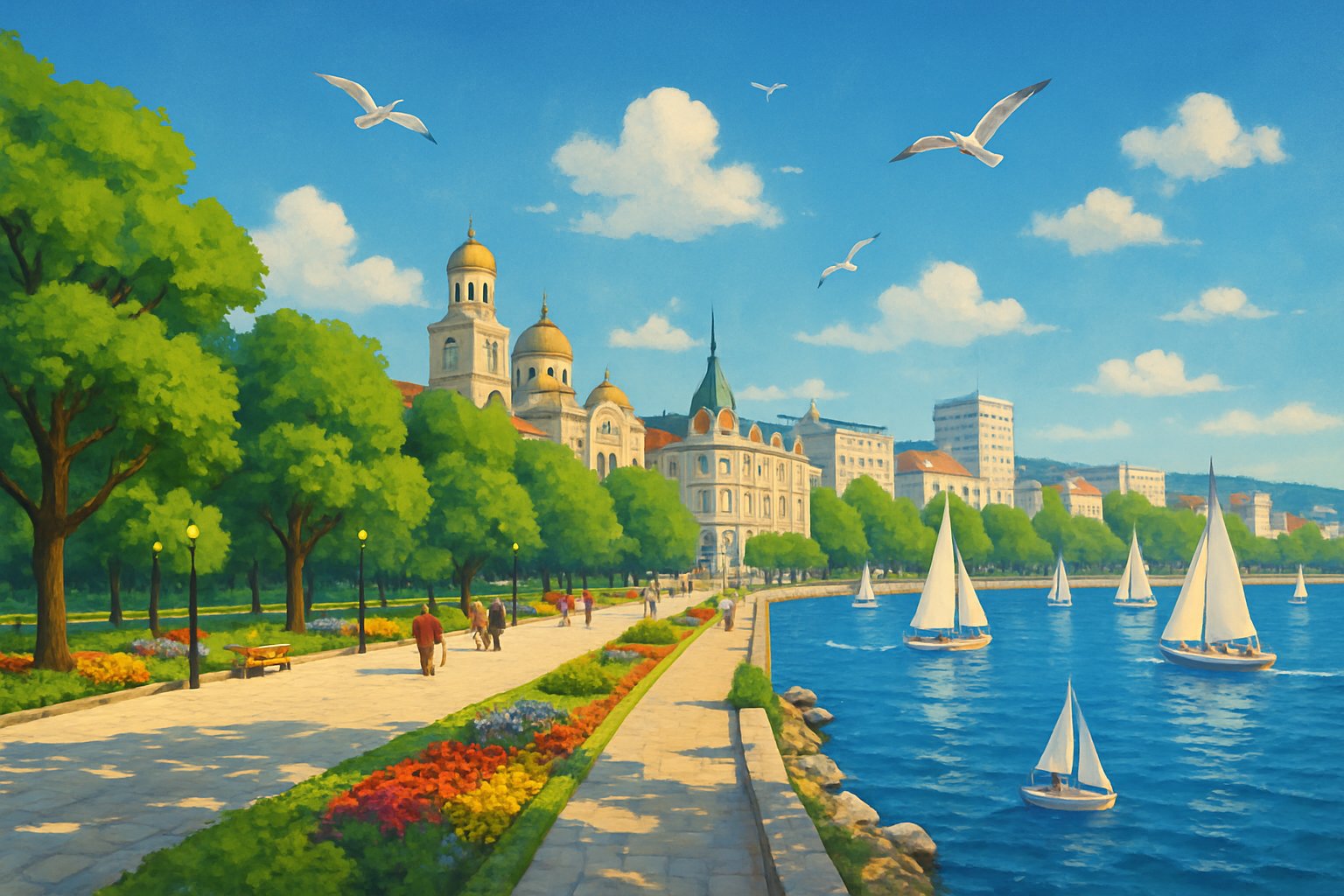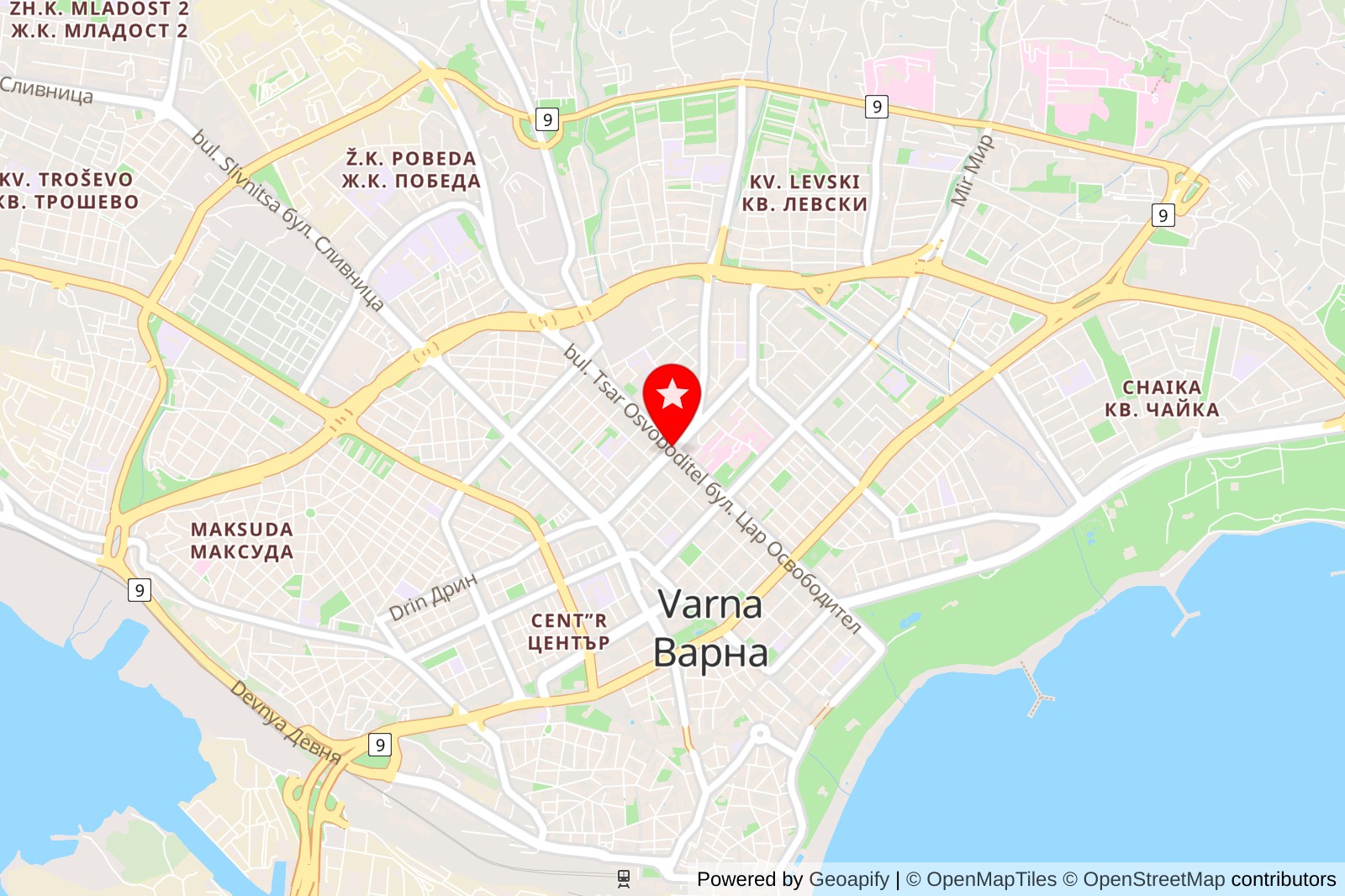Varna is Bulgaria’s third-largest city and the country’s main gateway to the Black Sea. It’s a place where thousands of years of history rub shoulders with modern seaside resorts.
You get ancient treasures and golden beaches, all in one spot.

We’re diving into everything you might want to know about Varna—archaeological wonders, travel tips, and a little bit of local flavor. If you’re curious about Varna’s culture or just plotting a beach escape, you’re in the right place.
1) Varna
Varna hugs Bulgaria’s Black Sea coast and easily claims the spot as the third-largest city in the country. Honestly, we found it to be a sweet blend of beach-town relaxation and deep, layered history.
It’s been a major port for ages—no surprise, given its location.
The beaches here? Some of the best along the Black Sea, hands down. Golden sand, warm water that stays inviting most of the summer, and those endless walks along the breezy coastline.
Varna’s roots run deep. We wandered through ancient ruins and soaked up stories about its days as a trading hub.
The museums are packed with artifacts that really show off the region’s past.
Blagomir Kotsev became mayor in November 2023. He studied abroad in Washington and London before coming home to lead.
We noticed the city feels organized and genuinely friendly to visitors.
Location: Varna, Bulgaria
Contact: 052 / 820-280
Website: Visit Website
History and Cultural Heritage
Varna’s story stretches back more than 6,000 years. You’ll find traces of ancient gold, remnants of Ottoman rule, and the marks of modern independence.
We wandered archaeological sites, admired 19th-century buildings, and caught glimpses of traditions that still thrive.
Ancient Origins
The Varna culture thrived around 4700-4100 BC on these Black Sea shores. It’s wild to think how advanced this prehistoric civilization was.
The World’s Oldest Gold Treasure
The Necropolis of Varna holds the oldest golden artifacts ever found, dating from 4600-4200 BC. These treasures tell a story of ancient sophistication.
You can check out these finds at the Varna Archaeological Museum. There’s jewelry, weapons, and ceremonial stuff—proof that Europe’s first social elites called this place home.
Chalcolithic Period
The Varna culture belonged to the Chalcolithic era in northeastern Bulgaria, bridging the gap from the Stone Age to the Bronze Age. It shared roots with other local civilizations of the time.
Architectural Landmarks
Varna’s architecture is like a timeline you can walk through. In just a few blocks, you’ll see buildings from wildly different eras.
19th Century Development
After the Ottomans left, Varna grew quickly. The first railway in Bulgaria opened in 1866, linking Ruse and Varna and boosting trade.
A lot of important buildings popped up then:
- Banks for growing business
- Hospitals for the swelling population
- Schools pushing Bulgarian culture forward
- Churches for the community
- Chitalishte—those local centers that keep traditions alive
Modern Heritage Sites
Today, you’ll find ancient ruins and elegant 19th-century buildings showing off European styles. The mix is pretty striking.
Festivals and Traditions
Varna keeps its old customs alive but doesn’t shy away from new celebrations. The city’s calendar is packed with both ancient rituals and modern arts.
Cultural Events
Festivals here spotlight Bulgarian heritage. There’s music, dance, and theater in venues old and new.
Maritime Traditions
As Bulgaria’s marine capital, Varna’s always been tied to the sea. Fishing, boat building, and coastal customs still shape local life.
Community Celebrations
Chitalishte centers keep organizing events that preserve folklore, crafts, and customs. It’s heartwarming to see traditions passed down the generations.
Practical Information for Visitors

Getting around Varna is a breeze thanks to reliable public transport and walkable neighborhoods. The Black Sea climate means you’ll get four distinct seasons.
Summer’s the busiest, but spring and fall are pretty pleasant if you prefer fewer crowds.
Getting Around Varna
Public Transportation
Varna runs an efficient bus network connecting all the key spots. Buses are frequent and cost about 1 Bulgarian lev per ride.
Just grab a ticket from the driver or at a kiosk. Main routes link the city center with beaches and neighborhoods.
Walking and Cycling
The city center is compact—most sights are within a 15-minute walk. Varna’s Sea Garden lines the coast and makes for a gorgeous stroll between downtown and the beach.
Hotels often rent bikes, and bike paths snake through the Sea Garden. Still, walking is probably the best way to soak up the historic center and waterfront.
Taxis and Rideshare
Taxis are everywhere and pretty cheap for short hops. Always ask the driver to use the meter or settle on a price before you get going.
Weather and Best Times to Visit
Summer Season (June-August)
Summer brings temps of 25-30°C (77-86°F)—ideal for hitting the beach. It’s peak season with loads of festivals.
Hotels and restaurants are in full swing, but expect higher prices. Varna’s great any time of year, but summer is classic beach mode.
Spring and Fall (April-May, September-October)
These months are milder, with temps around 15-22°C (59-72°F) and fewer tourists. It’s easier to enjoy outdoor sights without the crowds.
Most attractions stay open, and hotel rates dip. The weather’s just right for wandering the Sea Garden or exploring old ruins.
Winter (December-February)
Winters hover between 2-8°C (36-46°F), sometimes with snow. The beaches aren’t for swimming, but Varna’s museums and galleries stay open.
If you’re looking for peace and the lowest prices, winter’s your season.
Frequently Asked Questions

First time in Varna? Folks usually want to know about top sights, weather quirks, how to get around, and the local vibe. Let’s try to clear up a few things.
What are the top attractions to visit in Varna?
Varna’s got standout spots like the Roman Thermae, Sea Garden, and lively markets. The Roman Thermae are ancient Roman baths from the 2nd century AD.
The Sea Garden hugs the coastline and offers scenic walking paths. It links the city center to the beach.
There’s plenty of history beyond the sand. The Archaeological Museum houses the world’s oldest gold.
Don’t miss the Cathedral of the Assumption of the Virgin—it’s a stunner. The Ethnographic Museum is great for learning about local crafts and traditions.
Can you tell me about the climate in Varna throughout the year?
Varna has a temperate continental climate. Summers are warm (25-30°C/77-86°F) from June to August.
You can visit any time; spring and fall are mild (15-20°C/59-68°F). Winters usually range from 0-10°C (32-50°F).
Rain falls year-round, but you’ll notice a bit more in late spring and early summer.
Off-season, Varna feels quieter, and you’ll have the top sights to yourself. Summer’s the liveliest with outdoor events and beach fun.
How can one get to Varna by air, and what are the best flight options?
Varna Airport has both international and domestic flights year-round. During summer, charter flights land at Varna and Bourgas.
Major European airlines fly direct from cities like London, Berlin, and Moscow. Budget airlines pop up in peak months.
The airport is about 8 km from downtown. Buses and taxis run regularly to the city.
If you can’t find a direct flight, Sofia Airport offers more connections. From Sofia, you can bus or drive to Varna in about 4-5 hours.
Are there any notable beaches to explore in Varna?
Varna’s beaches are lively and sun-soaked. The main city beach stretches for kilometers with soft sand.
Primorski Park (Sea Garden) lines the main beach—great for relaxing or joining in on activities.
Golden Sands beach is about 15 km north. It’s a resort area with water sports, bars, and fancy hotels.
Kabakum beach is a quieter option with clean sand and clear water. We liked it for the chill vibe—much less crowded than the big tourist spots.
What are some fun facts about Varna’s history and culture?
Varna is Bulgaria’s third largest city and the Black Sea’s northern capital. It’s been a port for over 2,000 years.
The Varna Necropolis revealed the world’s oldest worked gold—over 6,000 years old. That find really changed what we know about ancient Europe.
Varna hosts the International Ballet Competition every two years, plus the Varna Summer International Music Festival.
The name “Varna” comes from an ancient Thracian word meaning “black” or “crow.” The Romans called it Odessos before the current name stuck.
Which languages are commonly spoken by the locals in Varna?
Bulgarian is the main language in Varna. You’ll see most street signs, menus, and official documents in Cyrillic script.
In tourist areas, hotels, and restaurants, English pops up everywhere. Younger locals usually have a decent grasp of English, thanks to school and the steady flow of tourists.
Older residents and some business folks still use Russian pretty often. German shows up too, especially in places that see a lot of German visitors.
Honestly, basic English phrases get you pretty far as a tourist. Locals seem to appreciate it if you try a few Bulgarian words like “hello” (zdravei) or “thank you” (blagodarya)—even if your accent is questionable.

